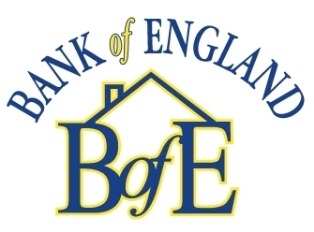 Ready to begin your next house hunting adventure? Great! Before you hit the pavement, Troy Silhan of Bank of England has some sage advice: Be certain you understand your pre-approval! It is vital that home buyers recognize what a pre-approval is – and isn’t – as well as the differences between the various pre-approval processes and documents.
Ready to begin your next house hunting adventure? Great! Before you hit the pavement, Troy Silhan of Bank of England has some sage advice: Be certain you understand your pre-approval! It is vital that home buyers recognize what a pre-approval is – and isn’t – as well as the differences between the various pre-approval processes and documents.
We recently caught up with Troy to discuss pre-approvals and clear up some lingering misconceptions about this important step in the purchasing process.
What is a pre-approval and how does someone get one? A pre-approval is the first step in purchasing a home. A buyer speaks with a lender who will go over the details of the purchase transaction, including pulling their credit, reviewing their income documentation, discussing the down payment, and the amount that the buyer qualifies for. It is important that this is done either face-to-face or during a detailed phone conversation where the buyer provides the important income information and bank statements.
How is the pre-approved amount determined? A client is pre-approved when their credit, income, and down payment are reviewed and it is determined that they qualify for a loan based on the documentation provided. This is not an approval for the loan; this gives the buyer the opportunity to make offers on properties. The amount is determined based on what their income can support, how much they are capable of putting down on the loan, and what payment amount they are comfortable with.
What are the limitations of a pre-approval? Limitations would include too low of a credit score, not enough funds for a down payment, or not enough income to qualify for a specific loan program. There are many loan programs available, so it is important for the lender to review each part of the application to determine the program that will fit the client’s needs.
What is the most common misconception about pre-approvals? The most common misconception is that all pre-approvals are the same. There is a big difference between a pre-approval, which is what Bank of England issues, and a pre-qualification letter, which is what many lenders and brokers provide buyers. With a pre-qualification, the lender spends about 20 minutes speaking with the potential buyer and pulls their credit report. If their credit qualifies and what they tell the originator fits the loan program, they issue the letter without verifying whether any of the information is accurate. This is giving the buyer a “loaded gun” to begin making offers on properties.
During the pre-approval process the loan originator pulls the buyer’s credit report and reviews the credit with them to go over details that could have a negative impact on the loan process. They review tax returns and recent pay stubs, and talk about the down payment and required cash to close. This is very important because often times, clients are borrowing money from a 401k or receiving a gift from a relative, and this is information that is needed to set the right expectation for the loan process.
Should consumers beware of automated pre-approvals? If so, why? Yes. Automated approvals, which are essentially pre-qualifications, can be dangerous. Many times a client makes an offer on a property, pays for an appraisal, home inspection, and other services and then the loan is declined because of something that would have been identified through the pre-approval process. They waste a tremendous amount of time and money.
What are the top three things that consumers should be ready for when they start the purchase process? 1.) Get together their last two years of tax returns, pay stubs, and bank account information. 2.) Discuss what payment they are comfortable making each month. Often clients compare their current rent payment to a mortgage payment and forget that there are taxes, homeowners insurance, homeowners association dues, and maintenance to consider. 3.) Make sure they are working with a lender that is local, that handles the process from application through closing, and the decisions are made internally.
Buyers and sellers should also be aware of pre-approval letters where the lender has not reviewed income information or bank statements.
Questions about pre-approvals? Visit Bank of England’s Jacksonville website for more information (http://www.boejax.com/).







